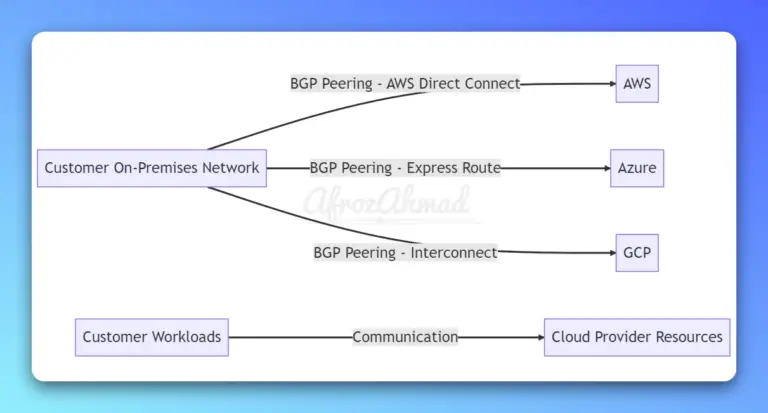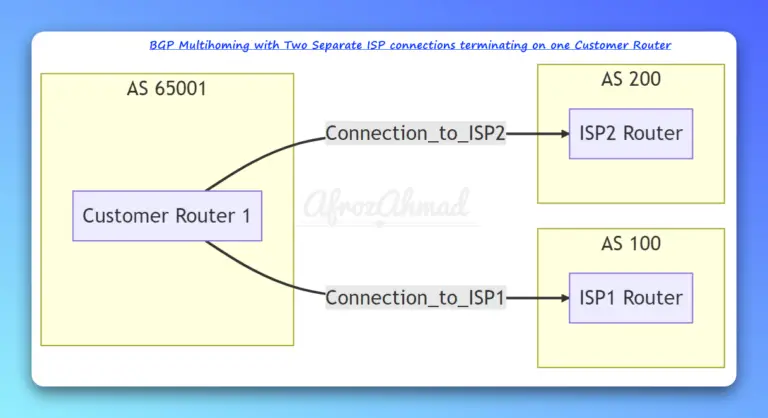Originally published back in 2011, this post introduced the essential concept of originating a default route in BGP. While the fundamental principles of BGP default route advertisement remain true, the landscape of network engineering, especially concerning automation, security, and advanced routing protocols, has evolved dramatically. As a senior network engineer, it’s crucial we update our understanding and practices to align with today’s sophisticated, highly automated, and security-conscious networks. This comprehensive update aims to bring those foundational concepts into the era of IOS XE 17.x, Junos OS 23.x, Arista EOS 4.30.x, and beyond.
Let’s revisit and expand upon BGP default route origination with a 2025 lens.
BGP Default Route Origination: The Fundamentals Reimagined
The core mechanism for originating a default route (0.0.0.0/0) to a BGP neighbor is still remarkably similar. However, the context of its application and the best practices for filtering and control have matured significantly.
You can instruct your BGP speaker to originate a default route to a specific neighbor using the default-originate command. This is typically done if your router has a default route in its own routing table (e.g., learned from an IGP or another BGP peer, or statically configured).
router bgp [AS_NUMBER]
neighbor [IP_ADDRESS] remote-as [REMOTE_AS_NUMBER]
neighbor [IP_ADDRESS] default-originate
Note: By default, this command originates the default route along with any other routes permitted by your outbound policies. If your intent is to advertise *only* the default route, perhaps to a specific peer providing internet access, you absolutely must back up this configuration with precise filtering using a prefix-list or a route-map. Relying on implicit behavior can lead to unintended route advertisements.
To advertise *only* the default route to a specific BGP neighbor, a prefix-list remains the most granular and recommended approach:
router bgp [AS_NUMBER]
neighbor [IP_ADDRESS] remote-as [REMOTE_AS_NUMBER]
neighbor [IP_ADDRESS] default-originate
neighbor [IP_ADDRESS] prefix-list ONLY_DEFAULT_ORIGINATE out
Your prefix-list would look like this:
ip prefix-list ONLY_DEFAULT_ORIGINATE seq 5 permit 0.0.0.0/0
Here, we are explicitly permitting *only* the default route (0.0.0.0/0). It’s crucial to understand prefix-list matching logic: 0.0.0.0/0 matches only the default route. If you were to use something like 0.0.0.0/0 le 32, it would match *all* routes, including the default, potentially advertising more than intended. Always double-check your prefix-list logic. In modern deployments, consider adding a deny 0.0.0.0/0 le 32 or deny 0.0.0.0/0 ge 1 at the end of your prefix-list if you only want to advertise 0.0.0.0/0 and implicitly deny everything else, then permit a default 0.0.0.0/0 before that.
Administrative Distance and Route Preference
One very important aspect to remember is how routing tables prioritize routes learned from different sources. When advertising a default route, especially to an iBGP neighbor, you must consider the administrative distance (AD) of other routing protocols. For example, in Cisco IOS XE:
- Connected: 0
- Static: 1
- EIGRP Summary: 5
- External BGP (eBGP): 20
- Internal EIGRP: 90
- OSPF: 110
- IS-IS: 115
- RIP: 120
- External EIGRP: 170
- Internal BGP (iBGP): 200
If your iBGP neighbor is already learning a default route from another IGP (like OSPF, AD 110), that OSPF-learned default route will be preferred over your iBGP-advertised default route (AD 200). You can check this with:
show ip route | include 0.0.0.0
If you see an OSPF default route like this:
R1#show ip route | include 0.0.0.0
Gateway of last resort is X.X.X.X to network 0.0.0.0
O*E2 0.0.0.0/0 [110/1] via X.X.X.X, 00:33:11, FastEthernet1/12
…it means OSPF is already providing a default route, and because its AD (110) is lower than iBGP’s (200), it will be installed in the routing table. To ensure your BGP-originated default route is preferred, you’d need to manipulate the OSPF behavior. While distribute-lists with access-lists are still technically supported, modern network engineers often prefer using prefix-lists and route-maps for more flexible and clear policy control:
ip prefix-list DENY_OSPF_DEFAULT seq 5 deny 0.0.0.0/0
ip prefix-list DENY_OSPF_DEFAULT seq 10 permit 0.0.0.0/0 le 32
router ospf 1
distribute-list prefix-list DENY_OSPF_DEFAULT in
This configuration denies the `0.0.0.0/0` entry learned via OSPF, allowing the iBGP-learned default route (assuming it’s otherwise valid) to be installed. The `permit 0.0.0.0/0 le 32` ensures all other OSPF routes are still processed.
Modern BGP Security: RPKI and Route Validation
In 2025, robust BGP security is non-negotiable. One of the most significant advancements is Resource Public Key Infrastructure (RPKI), which provides a cryptographic way to validate the origin of BGP routes. When originating a default route, it’s essential to consider how RPKI interacts with your routing policies.
RPKI allows you to verify that an Autonomous System (AS) is authorized to originate specific IP prefixes. While a default route (0.0.0.0/0) inherently has no specific origin AS, the principle of route validation extends to ensuring that legitimate internet prefixes are not hijacked. Modern BGP speakers (Cisco IOS XE, Juniper Junos, Arista EOS) support RPKI validation. It’s best practice to configure your BGP router to perform origin validation, dropping or de-preferring routes that are RPKI Invalid.
! Cisco IOS XE Example for RPKI configuration
router bgp [AS_NUMBER]
bgp router-id [ROUTER_ID]
bgp graceful-restart
! Enable RPKI validation globally
bgp rpki origin-validation enable
! You might then use a route-map to act on validation state
route-map RPKI_FILTER permit 10
match rpki valid
! Set local preference, MED, etc. for valid routes
route-map RPKI_FILTER deny 20
match rpki invalid
! Drop invalid routes or de-prefer them
! Apply to neighbor
neighbor [IP_ADDRESS] route-map RPKI_FILTER in
Implementing RPKI helps protect your network from BGP hijacks, ensuring that the default route you receive from your upstream providers is legitimate, and that your own originated routes are secure.
Automation for BGP Default Route Origination
Manual CLI configuration for BGP is increasingly being replaced by programmatic, API-driven automation. In 2025, network automation is not a luxury, but a necessity for agility, reliability, and security.
Leveraging Network APIs: NETCONF, RESTCONF, gNMI
Instead of SSHing into each device, modern platforms expose APIs like NETCONF, RESTCONF, and gNMI (Google Network Management Interface) which allow structured configuration and operational data retrieval. This enables tools to configure BGP default routes consistently across a fleet of devices.
Here’s a conceptual example using NETCONF (simplified XML payload):
<rpc xmlns="urn:ietf:params:xml:ns:netconf:base:1.0" message-id="101">
<edit-config>
<target>
<running/>
</target>
<config>
<native xmlns="http://cisco.com/ns/yang/Cisco-IOS-XE-native">
<router>
<bgp>
<id>65000</id>
<address-family>
<ipv4>
<unicast>
<neighbor>
<id>10.0.0.1</id>
<remote-as>65001</remote-as>
<default-originate/>
<route-map>
<direction>out</direction>
<name>ONLY_DEFAULT_OUT</name>
</route-map>
</neighbor>
</unicast>
</ipv4>
</address-family>
</bgp>
</router>
</native>
</config>
</edit-config>
</rpc>
This XML, sent over NETCONF, would configure the default-originate and route-map for a neighbor programmatically. Platforms like Cisco NSO, Juniper CN2 (Contrail Networking), and Arista CloudVision leverage these APIs for large-scale network management.
Infrastructure as Code and GitOps with BGP
The GitOps philosophy extends Infrastructure as Code to network operations. BGP configurations, including default route origination, are defined in declarative configuration files (e.g., YAML, Jinja2 templates) stored in a Git repository. Changes are made via pull requests, reviewed, and then automatically deployed by CI/CD pipelines. This provides version control, auditability, and collaboration.
# Example Jinja2/YAML for BGP neighbor config
bgp_config:
as_number: 65000
neighbors:
- ip_address: "10.0.0.1"
remote_as: 65001
default_originate: true
outbound_policy: "ONLY_DEFAULT_ORIGINATE_RM"
prefix_lists:
- name: "ONLY_DEFAULT_ORIGINATE_PL"
entries:
- seq: 5
action: "permit"
prefix: "0.0.0.0/0"
This YAML data would then be rendered into device-specific CLI or API payloads by an automation engine.
Practical Automation with Ansible and Nornir
For many network teams, Ansible Automation Platform and Python-based frameworks like Nornir are the go-to tools for network automation. They abstract away the complexity of different device CLIs and APIs.
Ansible Example (Cisco IOS XE):
---
- name: Configure BGP Default Origination
hosts: bgp_routers
gather_facts: false
tasks:
- name: Ensure default-originate and prefix-list are configured
cisco.ios.ios_config:
lines:
- "router bgp {{ bgp_as }}"
- " neighbor {{ item.ip_address }} remote-as {{ item.remote_as }}"
- " neighbor {{ item.ip_address }} default-originate"
- " neighbor {{ item.ip_address }} prefix-list ONLY_DEFAULT_ORIGINATE out"
- "ip prefix-list ONLY_DEFAULT_ORIGINATE seq 5 permit 0.0.0.0/0"
save_when: always
loop: "{{ bgp_neighbors }}"
vars:
bgp_as: 65000
bgp_neighbors:
- ip_address: "10.0.0.1"
remote_as: 65001
- ip_address: "10.0.0.2"
remote_as: 65002
Nornir Example (Python with Scrapli):
from nornir import InitNornir
from nornir_scrapli.tasks import send_configs
from nornir_utils.run_stats import print_result
nr = InitNornir(config_file="config.yaml")
def configure_bgp_default(task):
configs = [
f"router bgp {task.host['bgp_as']}",
f" neighbor {task.host['neighbor_ip']} remote-as {task.host['remote_as']}",
f" neighbor {task.host['neighbor_ip']} default-originate",
f" neighbor {task.host['neighbor_ip']} prefix-list ONLY_DEFAULT_ORIGINATE out",
"ip prefix-list ONLY_DEFAULT_ORIGINATE seq 5 permit 0.0.0.0/0"
]
task.run(task=send_configs, configs=configs)
results = nr.run(task=configure_bgp_default)
print_result(results)
These tools facilitate idempotent configuration, ensuring that your desired state for BGP default routes is always maintained across your network.
Advanced BGP Default Routing Use Cases: EVPN, SR, VXLAN
The role of BGP default routing extends beyond traditional WAN scenarios into modern data center and service provider architectures built on EVPN (Ethernet VPN), Segment Routing (SR), and VXLAN (Virtual eXtensible Local Area Network). In these environments, BGP is often the control plane for both L2 and L3 overlays.
A BGP-originated default route can be crucial for:
- Data Center Exit: In a VXLAN EVPN fabric, border leaf switches might originate a default route to internal leaf switches, directing all traffic destined outside the data center to the border leafs, which then forward it to the WAN or internet.
- Service Function Chaining: Directing traffic through specific service appliances (firewalls, load balancers) by originating a default route that points to the next-hop for the service chain.
- Inter-domain Routing in SR-MPLS/SRv6: While Segment Routing prioritizes explicit paths, a default route can act as a fallback or general internet exit for traffic not matching a specific SR policy.
The principles of default route origination remain the same, but their application is within a more complex, multi-layered routing environment where meticulous policy control and automation are paramount.
BGP Observability and Troubleshooting in a Modern Network
With increasing automation and complexity, merely configuring BGP isn’t enough; you need robust observability to ensure it’s behaving as expected. Traditional show ip bgp commands are still vital, but modern platforms and tools offer enhanced insights:
- Streamed Telemetry (gNMI, OpenConfig): Devices can stream BGP updates, neighbor states, and routing table changes in real-time, allowing for immediate anomaly detection.
- Network Observability Platforms: Tools like Suzieq, Kentik, and various commercial solutions aggregate BGP data from many devices, offering historical context, path visualization, and advanced troubleshooting queries. You can quickly see if a default route is advertised, received, and installed across your entire network.
- BGP Route Servers/Collectors: For external peering, public route servers (e.g., from RIPE, RouteViews) provide visibility into how your originated default route is seen by the internet.
When troubleshooting a BGP default route, beyond show ip route and show ip bgp, consider:
show ip bgp neighbors [IP] advertised-routes: To confirm your router is indeed originating the default route.show ip bgp neighbors [IP] received-routes: To see what your neighbor is sending you (and if they’re receiving your default route).show ip bgp 0.0.0.0/0: To see details about the default route in the BGP table, including path attributes and RPKI state.
Conclusion
The humble BGP default route, seemingly simple to configure, remains a critical component in network routing. While the foundational CLI commands have largely endured since 2011, the ecosystem around them has transformed. Modern network engineers must now think beyond manual configuration to embrace automation via APIs, secure their routing with RPKI, understand its role in advanced overlay networks like EVPN/VXLAN, and leverage robust observability platforms for operational excellence.
Keeping these best practices in mind ensures that your BGP default routing strategy is not just functional, but also resilient, secure, and ready for the demands of 2025 and beyond.
- How to Configure a Secure Site-to-Site VPN on Cisco Firepower Complete Guide - December 3, 2025
- Jobs for Network Engineers: Roles, Skills & Pay - December 3, 2025
- How to Change WiFi Password on Any Router : The Last Guide You Need - December 1, 2025



